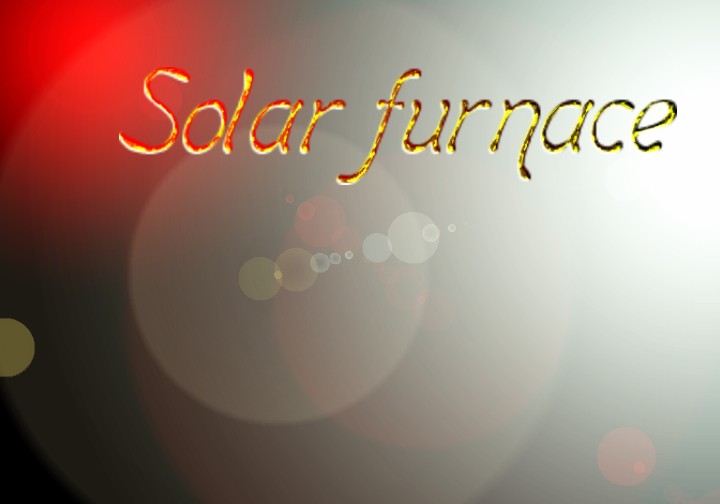
This is still only a proposal. No claims are made or implied except, very generally, as to engineering feasibility..

Balloons are slow but efficient.
When the craft is to rise above 20 miles ramjets (simple, economical air breathing jet engines) are to provide the required thrust, burning a mix of hydrogen from the balloons and oxygen from the thin air.
Ramjets would be capable of accelerating the craft up to mach 8, at which point they are to be shut down, and the scramjets ignited. Scramjets would be capable of accelerating the craft up to mach 26, still using the outside oxygen mixed with the hydrogen inflating the balloons.
When mach 26 is achieved and the craft attains orbit, the scramjets are to be shut down and rockets powered by hydrogen and oxygen from the balloons is to take over propulsion the craft to its destination. It should only take a day to reach orbit and use only a small fraction of the fuel as a rapid launch.
By using simple, repetitive components the vehicle can be made as large as necessary and costs minimized. All of the required components have been tested for years and are readily available on the open market.
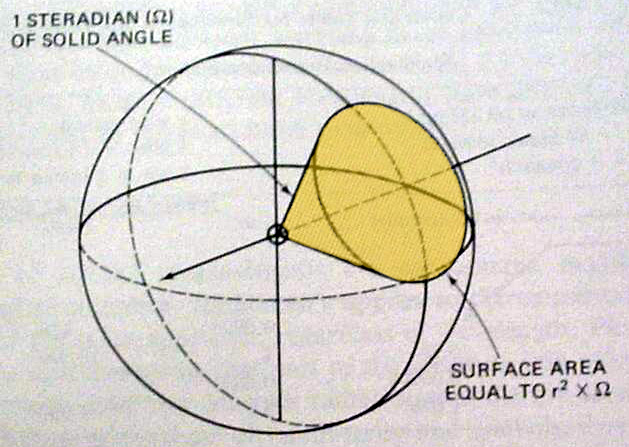
Here is an overview of
how the components of the systems are to be configured for
transmission of solar energy into the seas and upper atmosphere of the Earth.
Here we see the furnace as it is to be positioned in geosynchronous orbit, and how the different frequency laser beams are to be directed for different crucially important purposes.
Here we see the basic design of the solar furnace:
The system is to include two
such units, one in close solar orbit and the other in geosynchronous Earth orbit.
The furnace in Earth orbit is to receive laser light directed from the one in solar orbit as well as capturing light directly from the sun.
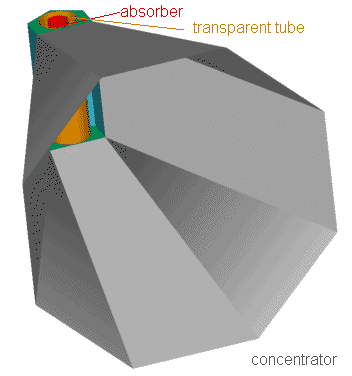
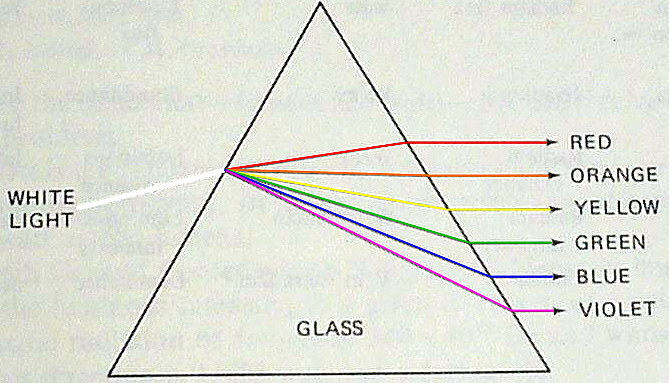
The laser wavelengths aimed through the stratosphere are to be only those specific wavelengths required to destroy chlorofluorocarbons, chlorine monoxide, sulfur dioxide etc.
These beams would never strike the surface of the earth, but only pass at an oblique angle, through the stratosphere and back out coming no more than within 15km. from Earth, affording them twice the time as an earthbound laser to strike their target molecules.
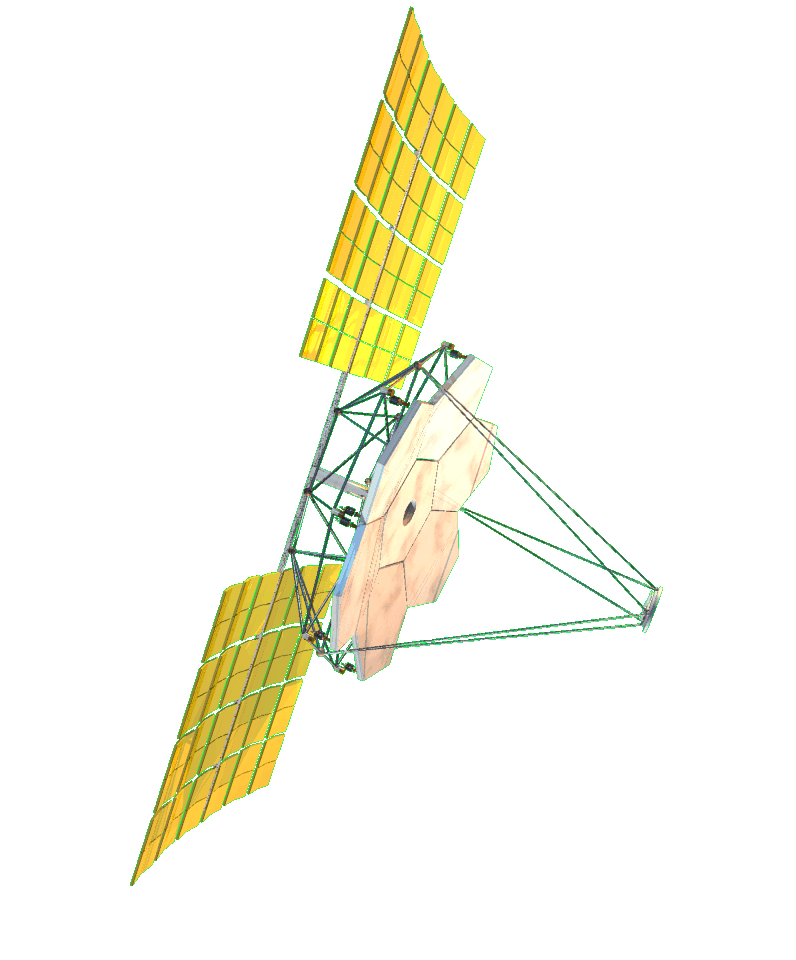
Also, with a network of additional mirrors in orbit at different points, lasers can be used to power satellites even in orbits that carry them into darkness for days at a time, and also even space probes into the Solar System and beyond, saving the need for onboard power generation and/or storage capacity and thus drastically reducing costly payload weight for launch.
Defense from stray or rogue nuclear missiles would also become feasible and perhaps even desirable (though, of course, everybody had better know and understand that a full defense shield is impossible and Mutually Assured Destruction remains the only likely outcome of any full out nuclear exchange).
Although any large and intact space debris can and should be recycled, nuts, bolts and even tiny flecks of paint orbiting faster than bullets that are proliferating at an increasing hazard to Astro-Workers and equipment, can be readily de-orbited by the same means.
More powerful lasers can also be our salvation for deflecting inevitable Asteroids on a collision course with the Earth, as have brought about mass extinction on our planet several times before. Also, near Earth passing Asteroids can be gently nudged into a stable Earth orbit for convenient exploitation of their immeasurable natural resources. Lasers can even provide remote propulsion into solar sails for gentle and steady acceleration unto very high velocities!
Multiple orbital mirrors can also allow for more ocean stations and solar stills at different points around the Earth, for greater convenience and shorter transportation of the products:
Different
frequency lasers are to shine
 down upon the ocean station(s), onto solar panels for
electrical power for electrolysis, and also for heating the water to near
boiling, because the reaction works best at higher temperatures.
down upon the ocean station(s), onto solar panels for
electrical power for electrolysis, and also for heating the water to near
boiling, because the reaction works best at higher temperatures.
After the current is passed through the heated sea water, the rising gasses are to be siphoned off and pressurized into a liquid form for storage in portable tanks, ready for market around the world as fuel, clean power with an emission of only pure water suitable for drinking and irrigation.
A briny residue from hydrolysis is to remain behind in the solar still at the ocean station, from which minerals are to be recovered:
From each cu. km. of seawater distilled the following chemicals and minerals can be recovered: chlorine 21,800,000 tons, sodium 12,000,000 tons, magnesium 1,560,000 tons, sulfur 1,020,000 tons, calcium 460,000 tons, bromine 74,600 tons, potassium 440,000 tons, carbon 32,000 tons, strontium 9,300 tons, boron 5,600 tons, silicon 3,400 tons, fluorine 1,490 tons, argon 780 tons, nitrogen 590 tons, lithium 195 tons, rubidium 139 tons, phosphorous 81 tons, iodine 68 tons, barium 34 tons, indium 20 tons, zinc 12 tons, iron 12 tons, aluminum 12 tons, molybdenum 12 tons, selenium 4.6 tons, tin 3.4 tons, copper 3.4 tons, uranium 3.4 tons, nickel 2.2 tons, manganese 2.2 tons, titanium 1.4 tons, antimony .5 ton cobalt .5 ton, cesium .5 tom, cerium .5 ton, yttrium .2 ton, silver .2 ton, lanthanum .2 ton, krypton .2 ton, neon .1 ton, cadmium .1 ton, tungsten .1 ton, xenon .1 ton, geranium .07 ton, chromium .05 ton, thorium .05 ton, scandium .05 ton, lead .02 ton, mercury .02 ton, gallium .02 ton, bismuth .02 ton, columbium .01 ton, thallium .007 ton, helium .007 ton and gold .005 ton.
At a certain point of diminishing returns, it would be more productive to begin again with a fresh batch of sea water than to persist with continued mineral extraction from the same brine. The spent brine then can simply be processed into ordinary sea salt.
And there are additional environmentally crucial applications:
Thermohaline circulation results from oceanic salt conveyance, colder and saltier and therefore denser and heavier water sinking lower into the sea, and warmer sweeter and therefore lighter water rising upwards towards the surface. These currents are pivotal to weather patterns and climate. As they change, either naturally or because of pollution, so do weather patterns and the Environment over all. And the results may be drastic.
But by simply returning spent brine back into the ocean at strategic times and locations, the normal oceanic salt conveyance can be restored and dangerous climactic upheavals averited.
Because the laser down to the solar still from on orbit will be so intense, vaporizing everything in it's path, there will inevitably be destruction of atmospheric oxygen. But the distilled water by product from use of the hydrogen fuel manufactured, will more than offset the lost oxygen via photosynthesis from vastly increased crop yields.
And, since even aquatic birds cannot fly too far without needing to land and therefore hug the coast line in their migrations, and the solar still will operate far enough out out to sea, no animal life need be endangered.
And again, the different separated frequencies comprising the entire spectrum of solar laser light to be available can be directed for whatever the most suitable application. At temperatures around 700 degrees Celsius and fluxes equivalent to 500 or more suns, solar furnaces and lasers are well suited to the complete incineration of hazardous wastes, even deadly gasses.
Focusing a beam of concentrated light onto hazardous wastes breaks down numerous toxic chemicals, including dioxin and polychlorobiphenyls (PCBs), because the ultraviolet portion of the solar radiation breaks the bonds holding together the hazardous components.
Then, in manufacturing
application on Earth or Off World, with the ability to slice or otherwise selectively
and rapidly heat the
surface of materials including the detoxified recyclables, phase transformation
hardening, cladding, thin-film deposition and rapid thermal tempering are
possible. Metal, ceramic and composite materials can be treated to obtain
higher-value materials with desired properties such as superconductivity or
greater resistance to corrosion, friction and oxidation, even
metallization of ceramics for electronic components and production of fullerenes
and nanotubes, unique materials with exciting new applications that require
temperatures above 3000 degrees Celsius for formation.

Copyright 2002 -2007 by Jerry Scovel and Aaron Agassi
|
|
|
k
Why a system in closer orbit about the sun?
Because that's where the power is!
The narrowing conical section
illustrates the diminishing needed surface area required for exposure to and
collection of the same quantity of energy as an object progressively nears the
sun. And as can bee seen, concentrations of available power would become
exponentially higher the closer the proximity to the sun.
Which is the reason the system as a whole is designed to include a component in relatively
close orbit about the sun itself to maximize usable power returns, said planned
orbit represented by the small circular arc near the apex of the narrowing
conical section, where, as can be seen, cross sections of the cone are smallest
indicating that energy is most abundant.
Here we see how the sun light is to be separated and focused into an infinitely variable continuous laser:
As the sun light, first concentrated, passes through the slit and onto the prism or diffraction grating, it is to be separated into all of the wavelengths of the spectrum visible and invisible.
From there the light shines into the fiber optic array so that each wavelength can be directly targeted to it's intended destination either back out into space through the upper atmosphere to remove pollution or downward to the still on the Earth's surface to extract hydrogen and oxygen from sea water.
At this point in the process each optical fiber is to actually function as a working laser!